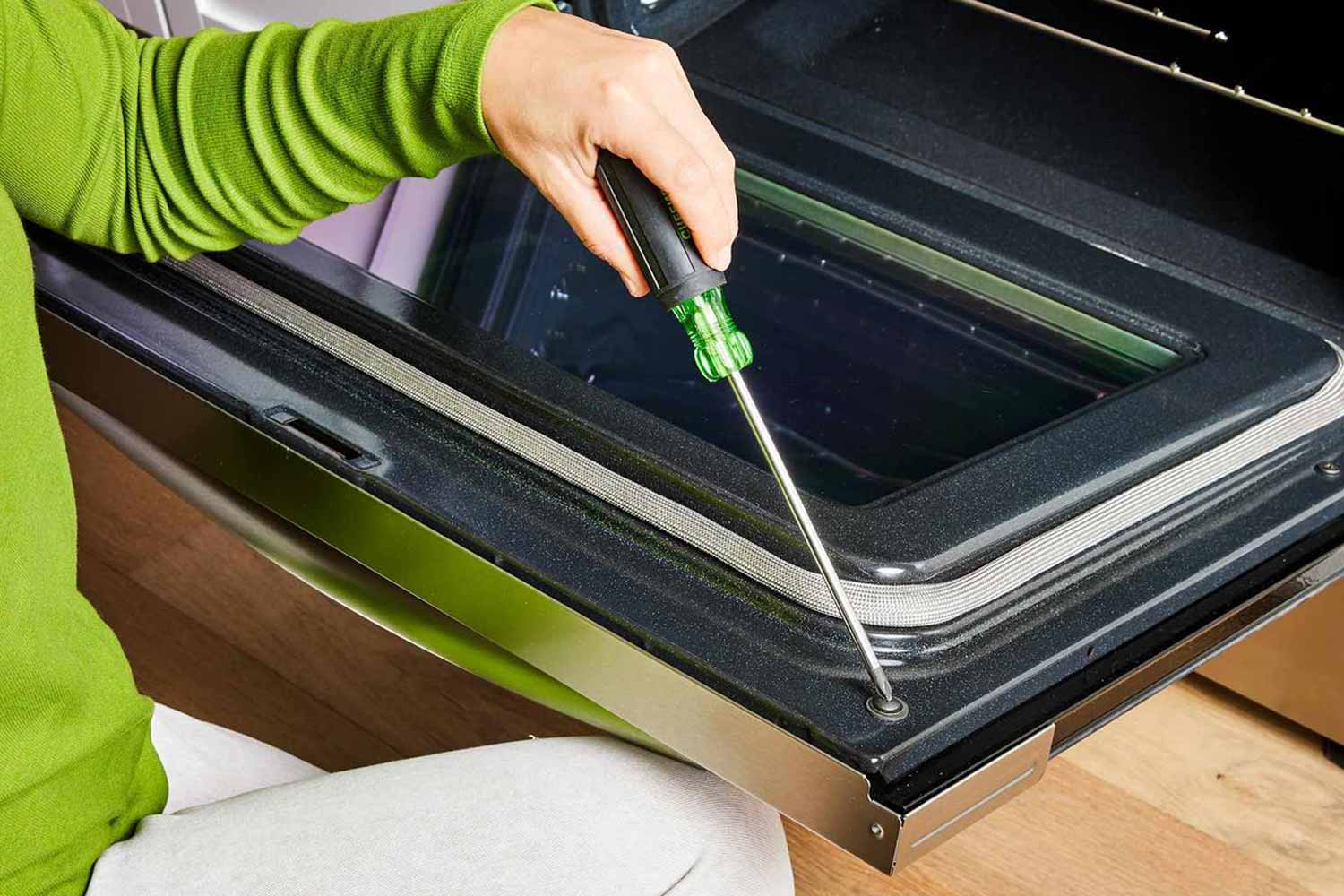Spills harden, streaks linger, and clarity quietly fades—yet shine is still possible with a few precise moves for your glass oven door. Experts recommend simple products, patient timing, and gentle technique. Use common pantry staples, then finish with a streak-free buff. Follow these steps, respect cooling periods, and avoid harsh grit. The result looks new, works better, and resists grime longer, because routine care keeps buildup from turning into stubborn, scratched haze.
Why this surface needs specific care
Tempered glass faces extreme heat, so residue bakes hard and forms a cloudy film. Unlike enamel walls, glass shows smudges fast and scratches easily. Because of that, pros treat it with gentle chemistry and soft tools. The goal is clarity, not abrasion, and a finish that resists streaks.
You need simple gear that works together without damage:
- vinegar
- baking soda
- Dawn dish soap
- A microfiber cloth
- A non-abrasive sponge
For stainless trims, use a dedicated cleaner like Bar Keeper’s Friend.
Choose methods that respect seals and coatings, since harsh scrubbers can scratch. Test any approach on a corner first, then scale up. Keep moisture controlled near edges to protect gaskets. Because visibility matters, a polished glass oven door improves safety and helps you spot spills earlier.
Outside care for the glass oven door
Mix a 50/50 solution of distilled white vinegar and water. Lightly mist the outer glass, then wipe using a clean microfiber cloth. Work in overlapping passes to lift oils and fingerprints. Because vinegar flashes quickly, you get fewer streaks and a crisp, reflective finish.
For tough smudges, reapply the mix and let it sit briefly. The short dwell softens residue, so a second wipe clears the haze. Buff with a dry microfiber for that final pop. Keep liquid away from edges, since oversaturation may affect seals or trap moisture.
If the front panel includes stainless steel, clean those trims separately. Use a stainless steel cleaner, such as Bar Keeper’s Friend, and follow the grain. Keep it off the glass to avoid film. This split approach preserves materials, yet the glass oven door stays crystal clear and smudge-resistant.
Inside cleaning steps that actually work
- Create a paste using 1/2 cup baking soda and enough water for spreadability.
- Add a few drops of Dawn, since surfactants unlock baked grease.
- Spread a thin, even layer over the interior glass.
- Leave it for 15 minutes. So, chemistry and time loosen stubborn splatters.
- After dwell time, scrub gently with a non-abrasive sponge.
- Lift the paste with paper towels or a microfiber cloth. To remove any film, prepare a rinse: one part vinegar to four parts water.
- Dip a clean, lint-free cloth and wipe until residue stops transferring.
- Dry the surface and buff to a streak-free shine with microfiber.
This quick finish step prevents watermarking as the door warms later. Because small, frequent wipes beat long, heavy sessions, add a short post-roast pass to your habits. Your glass oven door will keep that showroom clarity.
Deep-clean tips for the glass oven door inner gap
Most doors use two glass panes with an air space between them. Vapors and crumbs can drift inside, then settle as lines or spots. External wiping cannot reach that cavity. Because of this build, homeowners often wonder why marks reappear despite careful outside cleaning.
Experts note the only true fix is door removal. Follow the manufacturer’s guide to release hinges safely. Support the weight and enlist help. Set the door flat on padded towels. With access open, you can clean inner faces fully and restore transparency across the entire assembly.
Use the same mild playbook: vinegar solution for film, paste for stubborn specks. Keep liquids controlled, then dry completely before reassembly. Check hinge locks and alignment. Because careful steps prevent stress cracks and leaks, your refitted glass oven door looks clean edge to edge and seals properly again.
Frequency, safety rules, and the self-clean cycle
Timing depends on use and how fast residue builds. When you wipe spills right away, you stretch intervals between deep cleans. Clean the outer panel during regular kitchen resets. Tackle the inner face with your oven cycle, or sooner if splatters are obvious in daylight.
Start only when the oven is completely cool, since hot glass can craze or crack. Avoid harsh chemicals and aggressive abrasives that scratch or haze. Keep solutions off door edges and into the cloth, not poured on. Because small checks catch problems early, you protect coatings and seals.
Self-clean mode reaches about 900 degrees, so residue turns to ash. The cycle helps, yet a faint ash haze may cling to glass. After it fully cools, wipe with a damp cloth, then buff dry. Because heat alone does not guarantee clarity, a quick pass perfects the glass oven door.
Simple habits keep your oven glass clear and safe
Shine rarely needs harsh chemicals or force. Let cool glass guide your timing, and gentle products do the heavy lifting. Because you match cleaner to material and respect temperature, results improve with each session. With these habits, your glass oven door stays clear and ready for everyday cooking.
